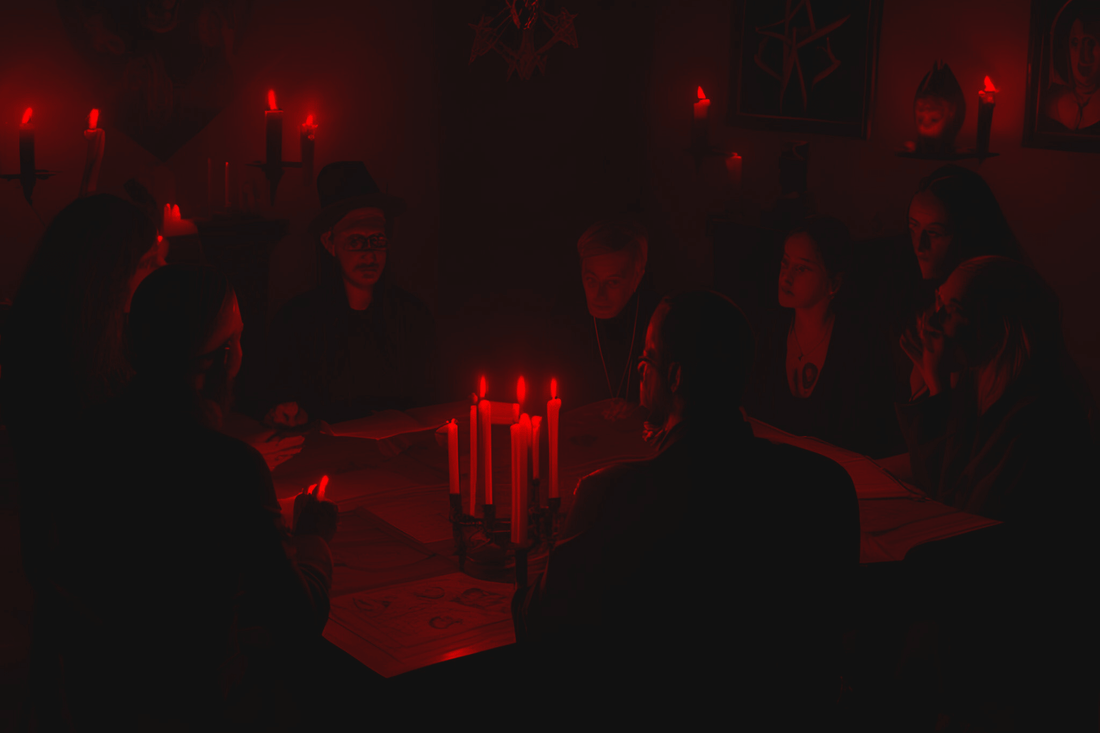
Is Satanism A Real Religion?
Share
Satanism sparks endless debates, but one question stands out: is it a religion? For some, the use of Satan as a symbol or deity raises eyebrows, while others see it as a structured belief system like any other. With roots in philosophy, ritual, and self-expression, Satanism has carved out a controversial but undeniable presence.
At its core, Satanism splits into two main camps. There’s the atheistic side, which views Satan as a metaphor for independence and critical thinking. Then there’s the theistic side, where practitioners revere Satan as an actual figure. This split adds complexity to the question of whether it qualifies as a religion.
Critics argue that Satanism lacks the spirituality or divine focus that defines most religions. Supporters point to its ethics, rituals, and community as proof that it meets the criteria. The debate remains heated, but the legal recognition of groups like The Satanic Temple adds weight to the idea that Satanism isn’t just a concept - it’s a religion.
What is Satanism?
Satanism isn’t a one-size-fits-all belief system. At its core, it splits into two main camps. On one side, you have atheistic Satanism, where Satan is a symbol, not a deity. Groups like the Church of Satan use him as a metaphor for independence, personal power, and rejecting arbitrary authority. It’s more philosophy than faith.
Then there’s theistic Satanism, where Satan is seen as a spiritual figure or even a god. This approach involves worship, rituals, and prayers directed at a being they view as a guide or protector. The specifics vary widely, depending on individual beliefs or practices.
Both sides challenge mainstream ideas of religion, but they share some common ground. They focus on personal freedom, self-discovery, and breaking away from conventional norms. Whether symbolic or literal, Satanism is far more complex than the stereotypes suggest.

Photo by Yosafat Herdian on Unsplash
Does Satanism Meet the Criteria of a Religion?
When you think about what makes a religion, a few things come to mind: shared beliefs, rituals, ethical values, and a sense of community. By that definition, Satanism fits the bill.
Atheistic Satanism offers a structured worldview based on individuality and rational thought. While its rituals are more theatrical than spiritual, they create a shared experience for followers. Ethical principles like personal accountability and rejecting oppressive systems give it a clear moral framework.
Theistic Satanism leans more traditional. With rituals, prayers, and even sacred texts, it ticks the same boxes as many established faiths. Followers treat Satan as a deity, seeking guidance and spiritual connection through their practices.
Both branches of Satanism offer the structure and meaning that religions typically provide. Critics may focus on how different it looks from mainstream faiths, but its key components are hard to deny.
Is Satanism Legally Recognised as a Religion?
Legally, Satanism is gaining ground as a recognised religion. In the US, The Satanic Temple has tax-exempt status, putting it on par with churches, mosques, and synagogues. This official recognition strengthens its standing as a legitimate belief system.
Globally, it’s a mixed bag. In some countries, Satanism falls under religious freedom laws, while in others, it’s misunderstood or outright dismissed. Here in the UK though, there’s no formal recognition, but practitioners are protected by anti-discrimination and human rights legislation.
Legal recognition matters because it shapes public opinion. For supporters, it legitimises Satanism as a religion. For sceptics, the lack of global acceptance leaves room for debate. Still, the presence of organised groups and growing protections worldwide point to a religion that’s impossible to ignore.

Photo by Kelly Sikkema on Unsplash
How Does Satanism Compare to Mainstream Religions?
Satanism might look radically different from mainstream faiths, but when you strip it down, the similarities are hard to miss. Like other religions, Satanism offers shared beliefs, ethical guidelines, and community rituals. What sets it apart is its unapologetic focus on the individual.
In atheistic Satanism, there’s no deity, which might sound like a dealbreaker for defining it as a religion. But plenty of faiths - like Buddhism - don’t rely on a god figure either. The emphasis is on personal empowerment and self-reliance, expressed through symbolic rituals and philosophical principles.
Theistic Satanism sticks closer to traditional religious structures. With prayers, sacred texts, and a focus on spiritual connection, it mirrors the frameworks of established faiths. The difference lies in its embrace of Satan as a positive figure - a complete flip from the narratives seen in Christianity or Islam.
Satanism challenges the template of what religion “should” look like, but in practice, it ticks many of the same boxes. It’s just playing by its own rules.
Challenges in Recognising Satanism as a Religion
Satanism’s biggest hurdle is its reputation. Thanks to decades of misinformation, many people still associate it with criminal behaviour, anti-social acts, or even cult-like practices. These stereotypes, fuelled by the media and the infamous “Satanic Panic” of the 1980s, have made it harder for Satanism to be seen as legitimate.
Then there’s the philosophical side. Critics argue that atheistic Satanism lacks the spirituality required to qualify as a religion, dismissing it as a social movement or lifestyle instead. Even theistic Satanism faces pushback, with some questioning whether its relatively small following and decentralised structure disqualify it.
Despite these challenges, organised groups like The Satanic Temple and the Church of Satan have fought for recognition. Their efforts have reframed Satanism as a belief system grounded in ethics, personal freedom, and community, proving it’s more than just a misunderstood label.
Why Some Argue Satanism is Not a Religion
Not everyone agrees that Satanism should be classified as a religion. For some, the issue is its atheistic branch, which replaces gods with symbols and rituals with performance. Critics claim this makes it more of a philosophy than a faith.
Even the theistic side faces scrutiny. Its fluid interpretations and lack of central authority lead some to question its legitimacy compared to established religions. Without large institutions or ancient roots, it’s often dismissed as too modern to count.
But these arguments overlook a key point: religion is about structure, meaning, and community, not just ancient texts or massive followings. Satanism provides all three, even if it doesn’t look like what most people expect from a religion.
So, is Satanism a religion? The answer depends on how you define the term. With its belief systems, ethical values, and organised practices, both atheistic and theistic Satanism meet many of the criteria that qualify a religion. Legal recognition and growing communities further solidify its place in the modern religious landscape.
At its core, Satanism challenges traditional ideas of faith while offering followers a clear framework for self-expression and personal growth. Whether you see it as a religion or not, its impact and structure can’t be ignored. Satanism has staked its claim, and it’s not going away anytime soon.













